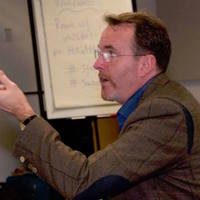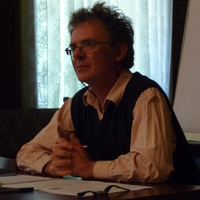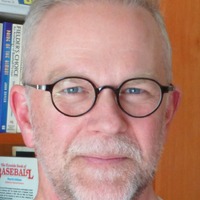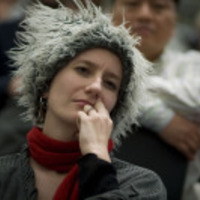
Lilian Wu
Related Authors
Daniel D. Hutto
University of Wollongong
Galen Strawson
The University of Texas at Austin
Judith L Green
University of California, Santa Barbara
E. Wayne Ross
University of British Columbia
Trebor Scholz
The New School University
danah boyd
Microsoft Research
Radhika Gajjala
Bowling Green State University
David Seamon
Kansas State University
Shaun Gallagher
University of Memphis
Armando Marques-Guedes
UNL - New University of Lisbon










Uploads
Papers by Lilian Wu
The response of the Advisory Committee to this charge was to organize this response according to three major EHR themes:
1. STEM Learning and Learning Environments 2. Broadening Participation and Institutional Capacity 3. STEM Workforce Development
These themes, and the supporting recommendations from the Advisory Committee, inform a vision for the future of EHR programs. This report presents each theme and recommendations for its fulfillment, ending with a summary of cross-cutting themes and related commentary.
The Advisory Committee undertook the effort to generate this report independently. The opinions, findings, and conclusions or recommendations expressed in this publication are those of the Advisory Committee and do not necessarily reflect the views of the organizations or agencies that provided support for the project.
BEST will report its findings and recommendations to members of Congress in the spring of 2004.
The response of the Advisory Committee to this charge was to organize this response according to three major EHR themes:
1. STEM Learning and Learning Environments 2. Broadening Participation and Institutional Capacity 3. STEM Workforce Development
These themes, and the supporting recommendations from the Advisory Committee, inform a vision for the future of EHR programs. This report presents each theme and recommendations for its fulfillment, ending with a summary of cross-cutting themes and related commentary.
The Advisory Committee undertook the effort to generate this report independently. The opinions, findings, and conclusions or recommendations expressed in this publication are those of the Advisory Committee and do not necessarily reflect the views of the organizations or agencies that provided support for the project.
BEST will report its findings and recommendations to members of Congress in the spring of 2004.
Although their numbers are increasing, women also are underrepresented at the highest tiers of administrative positions. Many women have succeeded, as demonstrated by enrollments, degrees completed, and the presence of women faculty, deans, and university presidents. But their success also reveals the challenges that women face in trying to do so. This guide is about enhancing women’s participation in academia in science and engineering.
In compiling this guide the Committee on Women in Science and Engineering of the National Academies sought to move beyond yet another catalog of challenges facing the advancement of women in academic S&E to provide a document describing actions actually taken by universities to improve the situation for women. In addition, the committee sought to show that the increase in participation of women can be achieved at research universities with stellar reputations—or to quote one university president, “Diversity versus quality is a false tradeoff.” This guide, then, is a compendium of solutions that may be of use to other universities and colleges seeking to advance women in science and engineering.
This report has been reviewed in draft form by individuals chosen for their diverse perspectives and technical expertise, in accordance with procedures approved by the National Academies’ Report Review Committee. The purpose of this independent review is to provide candid and critical comments that will assist the institution in making its published report as sound as possible and to ensure that the report meets institutional standards for objectivity, evidence, and responsiveness to the study charge. The review comments and draft manuscript remain confidential to protect the integrity of the process.
We wish to thank the following individuals for their review of this report: Robert Barnhill, University of Kansas; Joan Brennecke, University of Notre Dame; Susan Fiske, Princeton University; Linda Katehi, Purdue University; Maria Klawe, Princeton University; Melanie Leitner, Washington University; Laurie McNeil, University of North Carolina, Chapel Hill; JoAnn Silverstein, University of Colorado; Crispin Taylor, American Society of Plant Biologists; and Diane Renee Wagner, Stanford University.
Although the reviewers listed above have provided many constructive comments and suggestions, they were not asked to endorse the conclusions or recommendations, nor did they see the final draft of the report before its release. The review of this report was overseen by Mildred Dresselhaus, Massachusetts Institute of Technology. Appointed by the National Academies, she was responsible for making certain that an independent examination of this report was carried out in accordance with institutional procedures and that all review comments were carefully considered. Responsibility for the final content of this report rests entirely with the authoring committee and the institution.
Lilian Wu
Chair
Baumol presents his analysis with characteristic clarity, tracing the fast-rising prices of health care and education in the United States and other major industrial nations, then examining the underlying causes, which have to do with the nature of providing labor-intensive services. The news is good, Baumol reassures us, because the nature of the disease is such that society will be able to afford the rising costs.
6.Strengthen connections between organizations that have a stake in the participation of women in the sciences and engineering, such as the corporate and academic worlds, the formal and informal education sectors, associations of women and associations of sciences, and between higher education and K-12 schools.7.Place greater emphasis on determining what works best in increasing opportunities for women and girls and how this knowledge can be shared and used by others.
This book paints a timely picture of the status of female faculty at top universities, clarifies whether male and female faculty have similar opportunities to advance and succeed in academia, challenges some commonly held views, and poses several questions still in need of answers. This book will be of special interest to university administrators and faculty, graduate students, policy makers, professional and academic societies, federal funding agencies, and others concerned with the vitality of the U.S. research base and economy.
To address these concerns, the National Science Board Committee on Education and Human Resources hosted a group of distinguished panelists to participate in a workshop entitled, “Broadening Participation in Science and Engineering Research and Education” on August 12, 2003. The workshop was very well attended by people concerned with diversity in U.S. academic institutions and the workforce. The workshop had two objectives: first, to celebrate the progress that American universities have made in bringing diversity to science and engineering; and second, to identify strategies for further increasing the diversity of the nation’s science and engineering workforce
On April 24, 2013, the National Research Council Committee on Women in Science, Engineering, and Medicine held a workshop to explore emerging research and to discuss career pathways and outcomes for women who have received bachelor's degrees in engineering. Participants included academic researchers and representatives from the Department of Labor, National Science Foundation, and Census Bureau, as well as several engineering professional societies. Career Choices of Female Engineers summarizes the presentations and discussions of the workshop.
An ad hoc planning committee, under the auspices of the National Academies' standing Committee on Women in Science, Engineering, and Medicine (CWSEM), convened a public workshop to examine the career outcomes of women recipients of bachelor’s degrees in engineering. The importance of educating and training a technical workforce has received significant public interest lately, but there has been much less on the subject of retaining scientific and technical employees in the workforce. The retention of workers in these areas is particularly challenging for women and underrepresented minorities. The workshop that is the focus of this report was organized to address career pathways and advancement, areas of priority for the CWSEM. The committee is interested in (1) understanding gender differences in the recruitment, retention, and advancement of women at critical transition points and (2) investigating and disseminating the best practices to facilitate career transitions and advancement for all.
The workshop discussions uncovered interesting, puzzling, and even alarming trends. For instance, the B&B data showed that the retention rates for all cohorts of men in engineering remained fairly steady one year after graduation, whereas there was dramatic variation in the retention rates for women, depending on the cohort population (defined by the year of graduation): female retention rates one year after graduation were 67.8 percent for Cohort 1 in 1994, 51.6 percent in 2001 (Cohort 2), and a comparatively dismal 36.4 percent in 2009 (Cohort 3). The survey data for Cohort 3 indicate that for these women it was harder to find jobs they wanted in locations they desired in comparison to men. In addition, more women in Cohort 3 cited poor working conditions as a factor for leaving engineering (8.5 percent) compared to men (only 0.5 percent), indicating that climate and work opportunities remain important problems to be addressed to reduce gender differences in retention in engineering.
Lilian Wu, program executive for IBM’s Global University Program and former CWSEM chair, opened the workshop. She proclaimed it an exciting time to be an engineer or computer scientist as the world is becoming increasingly computerized, interconnected, and instrumented with sensors, developments that have made it possible to capture massive amounts of data on natural systems, manufactured structures, and social systems. This information can in turn be used to improve the delivery of public services, such as education, public safety, and health care, as well as the way cities operate. She observed that another important development is that people and systems are much more interconnected and there is an emerging capacity to look at systems in much greater depth. The healthcare system is not improved in isolation, for example, and the new data and interconnected technologies are changing the nature of physical manufacturing as well. Engineers and computer scientists are at the center of this new world, and women and minority groups must fully participate in the design and building of it, Wu said. Efforts at this workshop to examine women’s career paths and obstacles can point the way to ensuring that this new world has a system in which women and minority groups can fully participate.
After Wu’s introductory remarks, attendees heard presentations on the research commissioned for the workshop. Gail Greenfield, principal with Mercer Consulting, reviewed her findings on “Career Outcomes of Women Engineering Bachelor’s Degree Recipients,” followed by Nadya Fouad and Romila Singh of the University of Wisconsin–Milwaukee, who detailed the results of their study investigating why women leave engineering. Tom Perry then led a discussion of data needs, critical transitions, and career pathways for women in engineering that yielded numerous insights and ideas for further research. A special feature of the workshop was the presentations by graduate students in public policy and management at Carnegie Mellon University’s H. John Heinz College who surveyed small and medium-sized businesses about women on their technical staff. The workshop closed with a general discussion of the issues presented and of other areas that warrant further exploration as well as a call to the attendees to incorporate the workshop observations and lessons in their actions going forward.